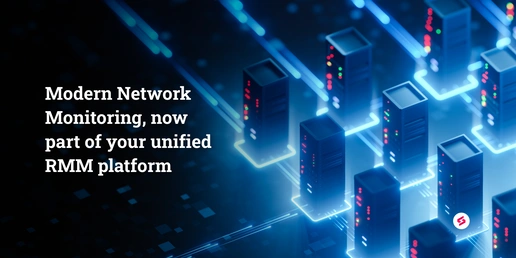In a market that remains hot during the pandemic, it’s a good time to work more closely than ever with your customers, some of whom may be struggling to keep their heads above water.
If you’re a managed service provider and you’re not tracking customer satisfaction, you’re not alone. Studies have shown that most MSPs don’t track metrics to assess the quality of their services or how likely they are to retain their customers — despite the fact that customer satisfaction can have a significant impact on their overall business.
There is a lot at stake here. With the rise of digital transformation initiatives and efforts to accelerate them during the COVID-19 pandemic, MSPs are more in demand than ever, as many organizations require additional skillsets and expertise.
Related reading: How to become a successful MSP in this current market
As a result, the managed services market has grown more competitive. IDC projected $300 billion in spending on managed services worldwide, up from $292.4 billion in 2019. So it’s not enough to just win customers – the trick is retaining them. But if you’re not tracking customer satisfaction, you likely aren’t aware of how it can affect your business, such as revenue growth, churn, and the potential for cross-selling.
The use of remote monitoring and management tools has been a godsend for MSPs since they enable automation and the ability to manage a large volume of customers’ infrastructure. They may also be a double-edged sword. The increased efficiencies have meant the need for less personalized attention. So what should you be doing, especially as the pandemic continues to drag on?
Related reading: Navigating the new normal and other trends we weren't expecting
Show you care
Much has been written about the need for IT professionals with so-called soft skills. Never has it been a more important time to put them into play.
Start by showing your customers some love. Don’t lose sight of their needs. Be proactive and find out what they need and how you can support them. That means communicating and listening.
For example, make sure there is a channel available to them to provide regular feedback about the services you provide.
Empathy is also important, as your customers are likely experiencing some degree of disruption to their businesses right now.
Be transparent and encourage open dialogue. It will help foster deeper relationships and build trust.
Related reading: 6 tips for effective MSP helpdesk operations
Provide flexibility in your offerings
The word “pivot” is frequently used to describe how companies are handling changes in their business. For example, certain industries are experiencing higher demand right now, like healthcare and education, while others, like retail and automotive, maybe seeing a decline.
It’s a good idea to meet your customers where they are and scale their services to match their current needs.
Bear in mind that at some point, though, your client may not need the additional support, and you’ll have to readjust those services.
Also, aim to go above and beyond what they have paid for!
Become a strategic partner
More companies are accelerating the move to cloud-based, serverless IT systems, and applications. As organizations go to this model, traditionally managed IT services are becoming less valuable, observes Pavel Pragin, CEO of cloud provider ClearScale.

That means managed service providers need to pivot to provide more value to their customers by coming alongside them as a strategic partner, rather than just a point in time, tactical service provider.
Pravel Pragin CEO, ClearScale |
It’s no secret that some businesses have been struggling, and some have been forced to close. For example, ClearScale is trying to help its customers reduce their cloud costs by monitoring their AWS charges and provide expertise in managing their AWS spend.
If you’re in a position to do so, work with your customers by offering alternative financing options such as delayed billing or even discounts. A little can go a long way toward engendering goodwill.
Identify ways your customers can save money over the longer term. It’s a good time to assess their overall IT framework. Doing that can pinpoint opportunities for greater efficiencies by automating repetitive and time-consuming tasks.
It’s also important to look for advantages you can provide over other MSPs.
Educate your customers
While it’s a given that you’re the tech experts – not them – provide some understanding of how to use your products, especially when you have a new offering. Customers are more likely to adopt a new product or service after it’s been introduced by someone offering a good customer experience.
Also, show them some things they can do on their own to provide a level of satisfaction.
Educating your customers is not a one-and-done exercise; it should be a continuous process if you want your customers to make the right decisions about the services they need.
Did I mention you should show them you care? Sometimes the customer experience gets lost when MSPs are focused on acquiring new customers and boosting revenue. Of course, attaining new customers is important to increase your revenue stream, but customer retention should not take a back seat to that.
After all, it’s always less expensive to retain your customers than go after new ones.





